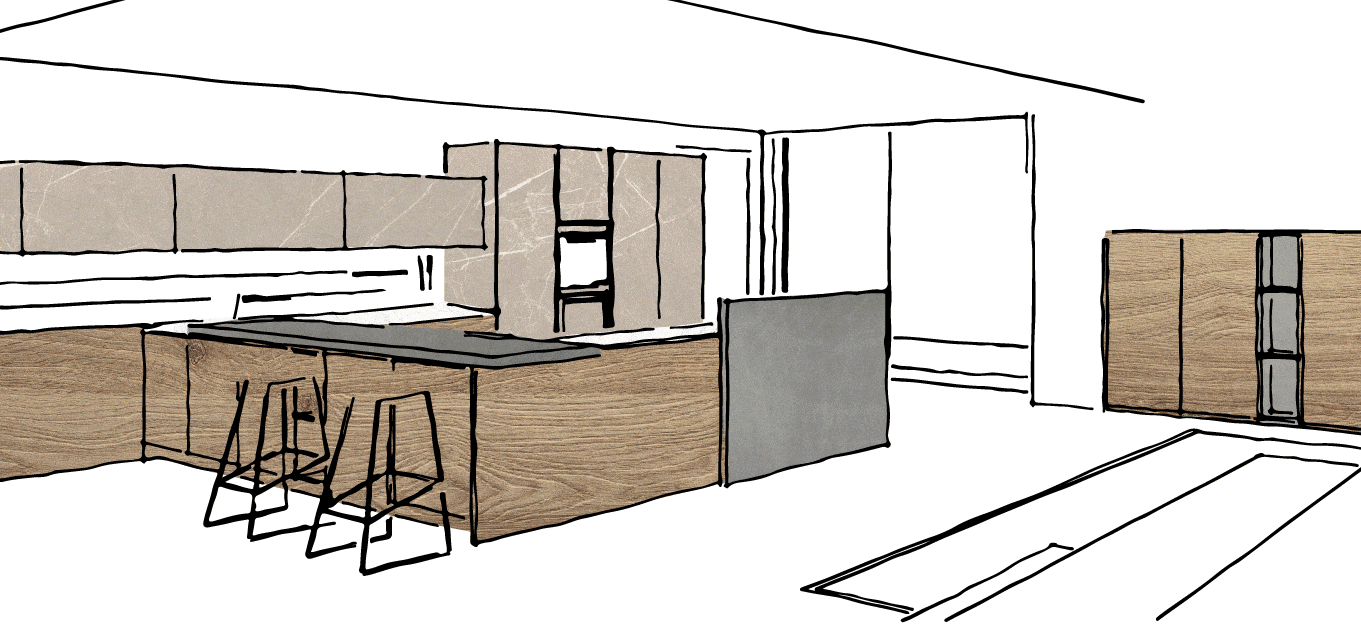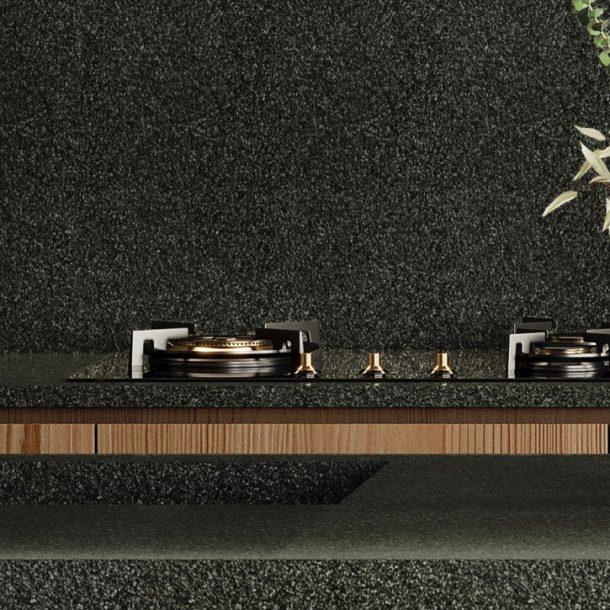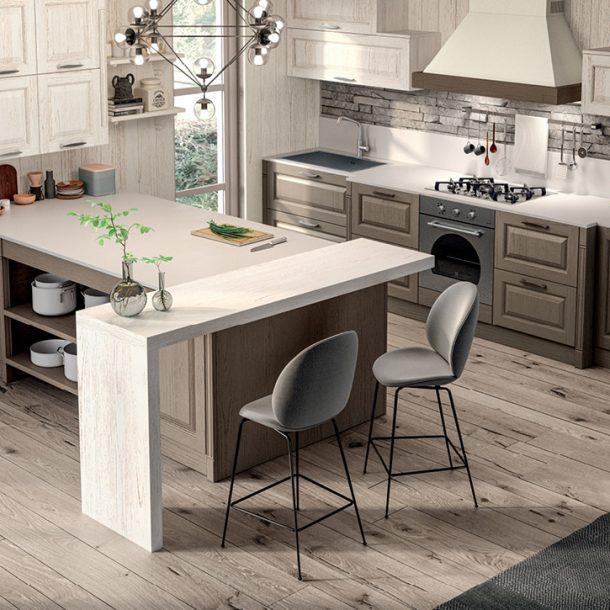
HOW TO LIGHT A KITCHEN: TIPS AND IDEAS
Find out how to light a kitchen, with space-enhancing solutions that create a pleasant ambiance while reconciling style, practical and energy-saving requirements.
HOW TO LIGHT A KITCHEN: IDEAS AND TIPS FOR EFFECTIVE LIGHTING
Lighting a kitchen properly is fundamental not only for ensuring safety and efficiency, but also for making the entire space welcoming and aesthetically pleasing.
Below we provide some practical kitchen lighting design tips that take into account certain essential factors such as natural light, colour, the size and arrangement of the space and the different types of lighting available on the market.
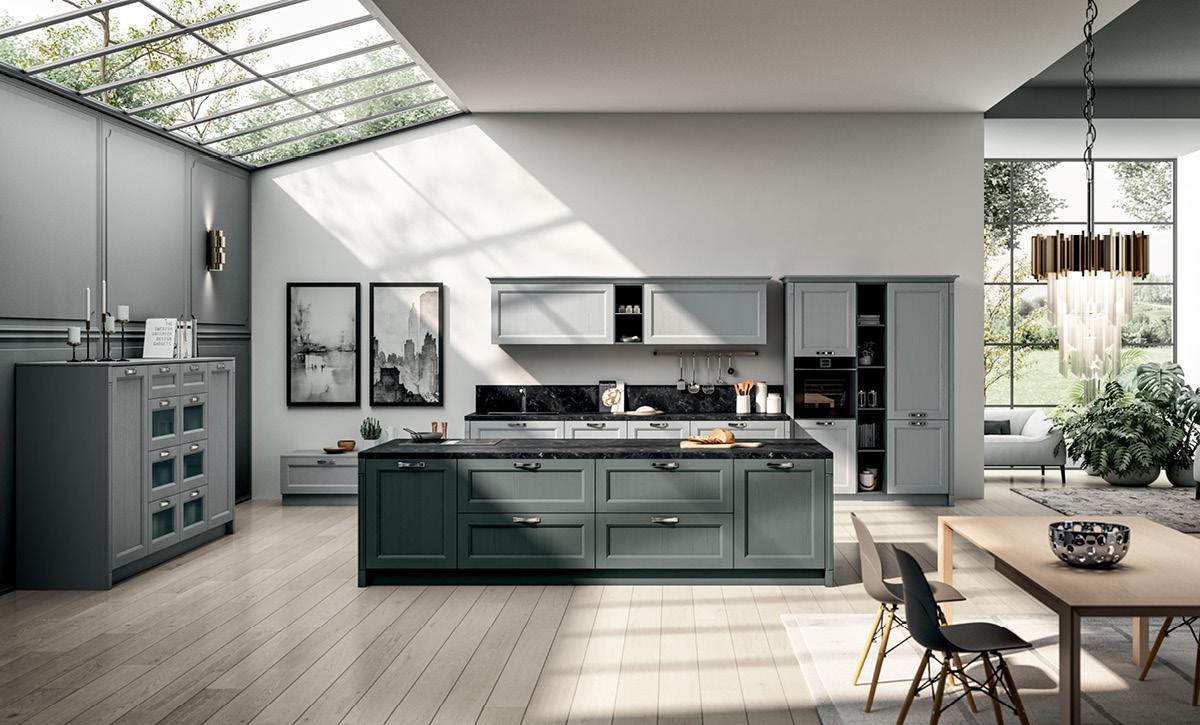
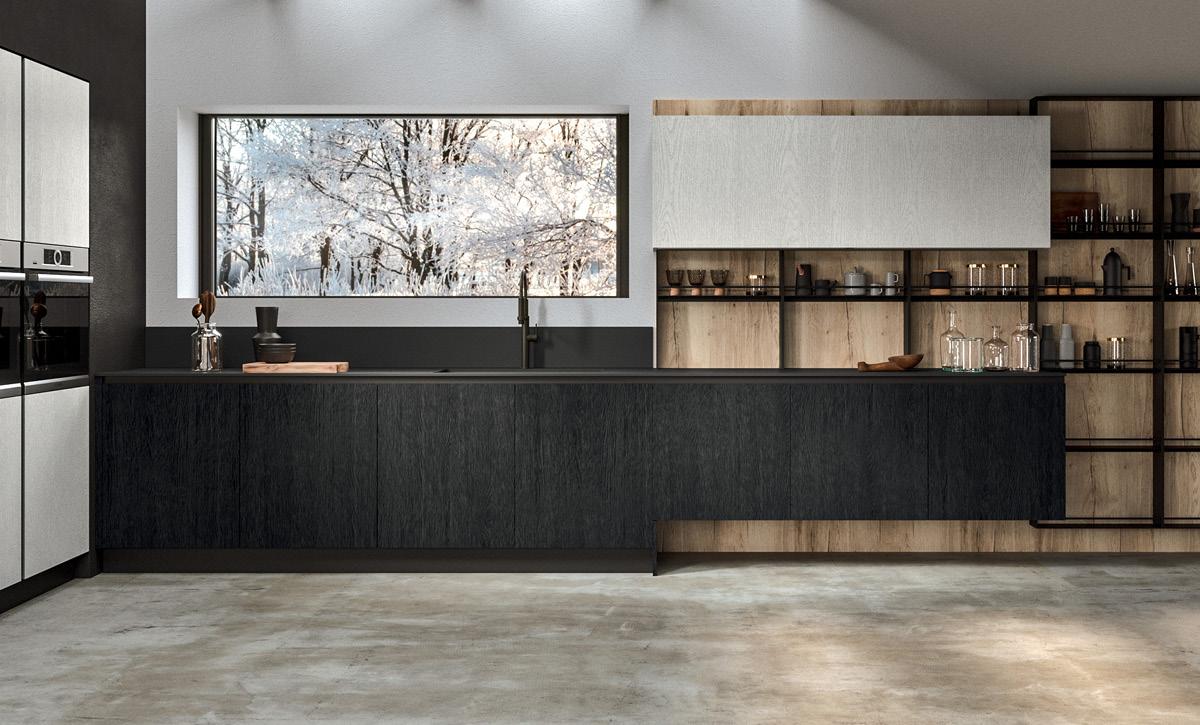
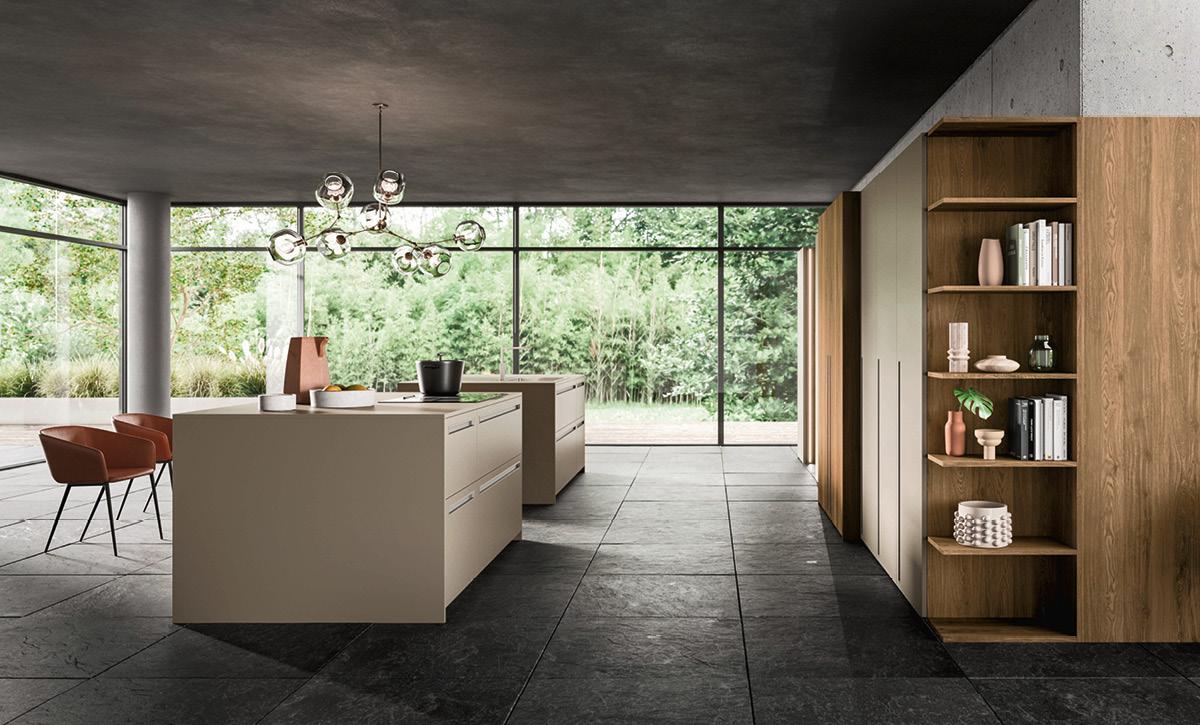
MAKE THE MOST OF THE KITCHEN’S NATURAL LIGHT
The natural light available during the day is the first aspect to be considered when designing a kitchen and it should be able to light the entire work area without creating undesirable areas of shadow.
When a worktop is positioned in front of a window care must be taken to ensure that the direct or reflected light is not disturbing and the use of curtains or shades should therefore be considered. Natural light can also come from the sides or, for example in a loft, from a skylight. The important thing is that it does not come from the opposite side to the worktop, because the shadow of the person using the kitchen would require the use of artificial light even during the daytime.
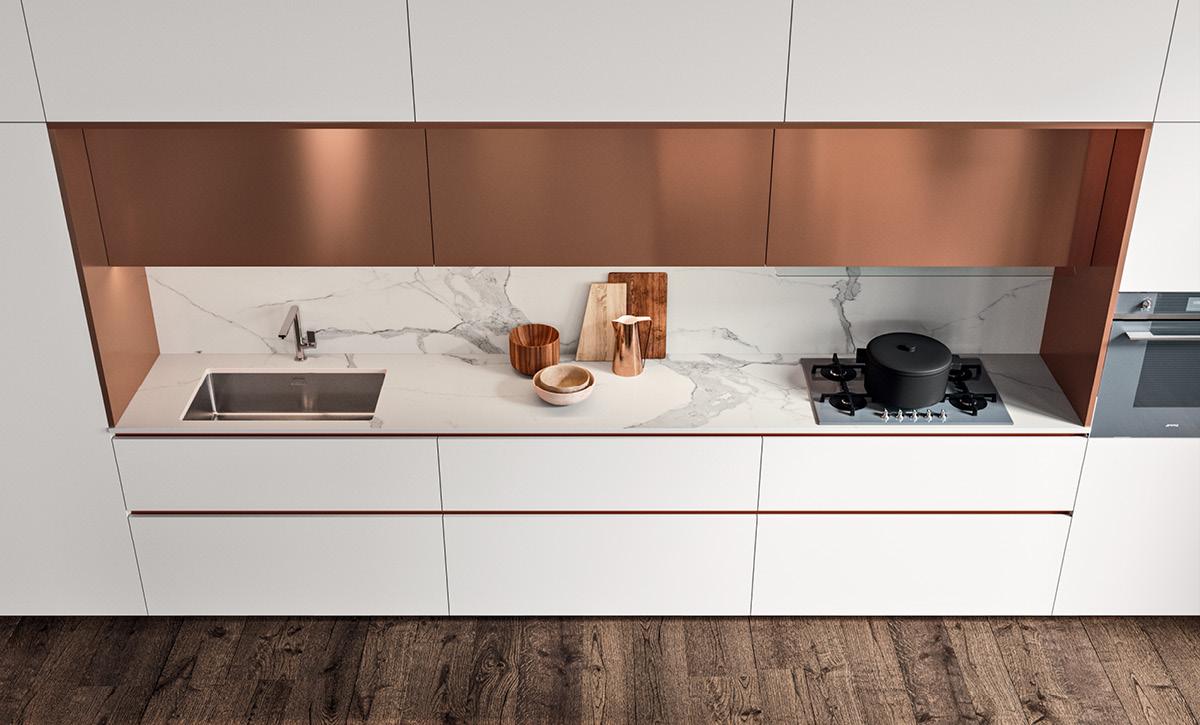
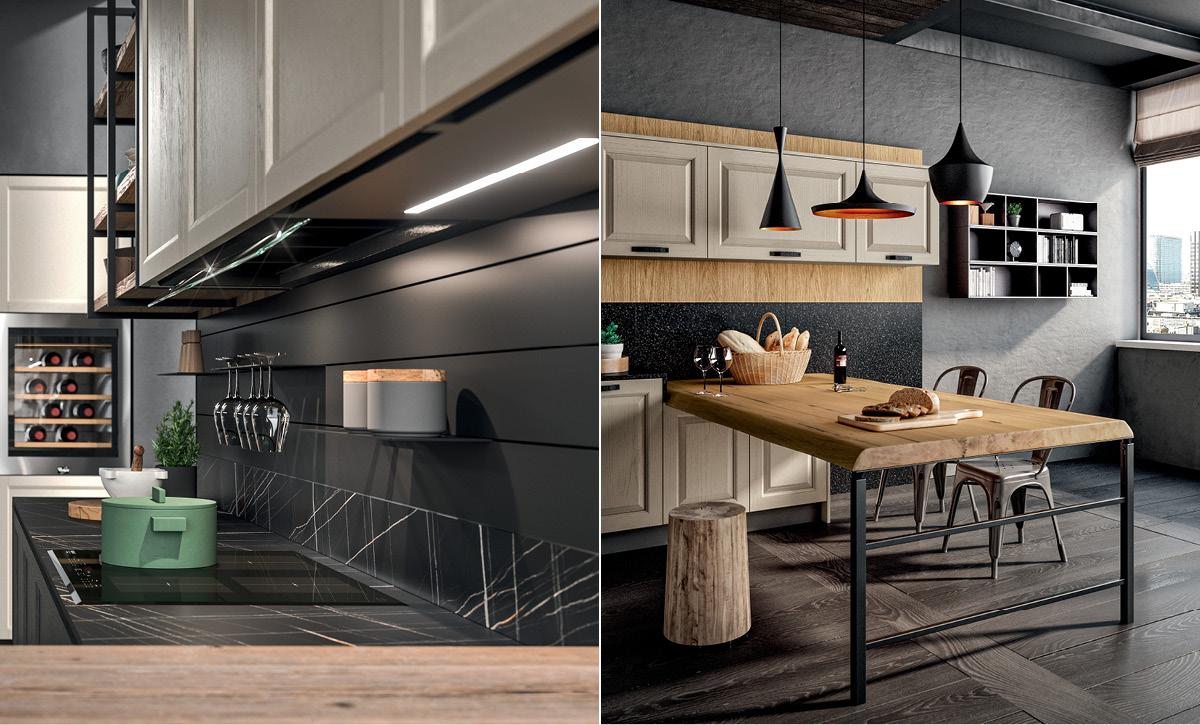
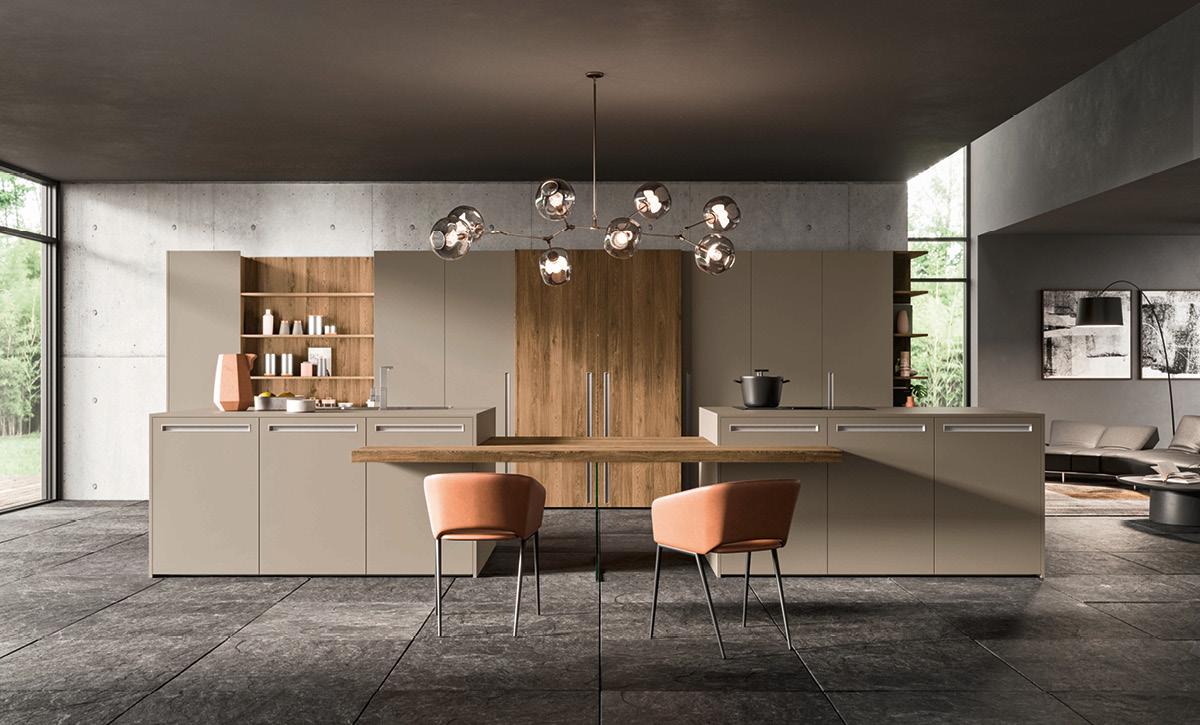
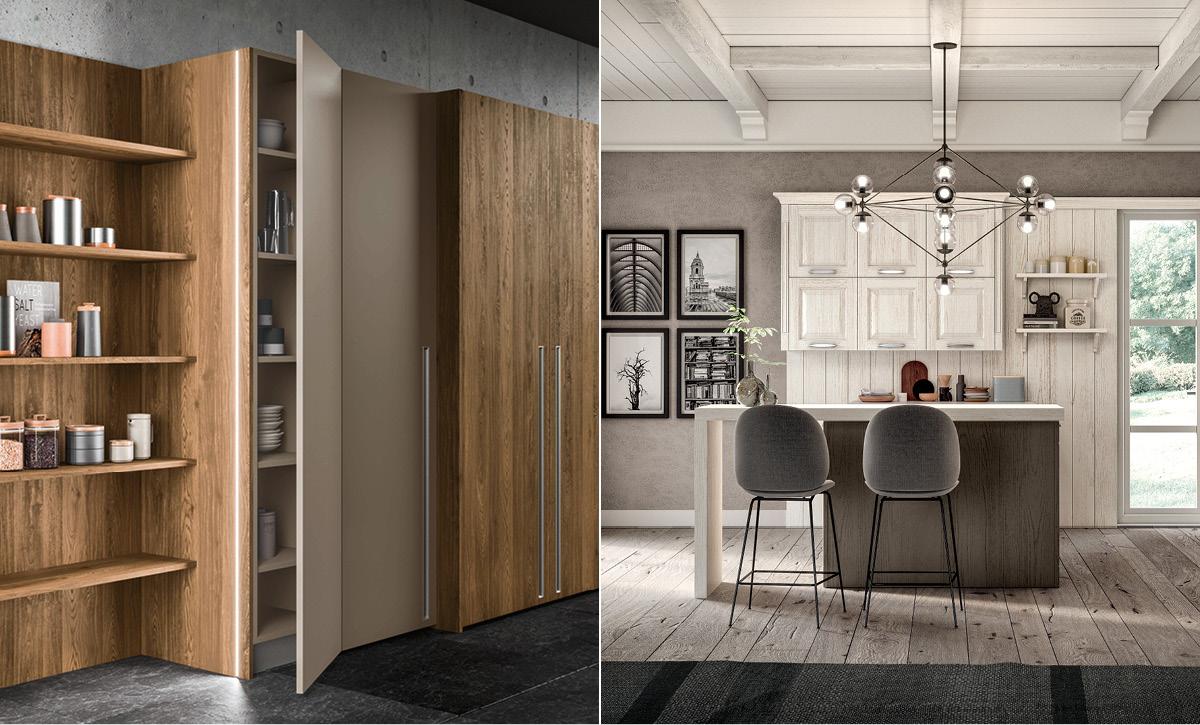
TIPS FOR CHOOSING THE MOST SUITABLE TYPE OF LIGHTING
When talking about lighting, we must first make a distinction between direct and indirect light.
- Direct light: the light flow is directed towards one or more specific points and therefore lights a well-defined area. This is the case of ceiling lamps, under-wall unit lights and adjustable spotlights. Direct light should be used for kitchen worktops, cooking and washing areas and the table or surface used for eating.
- Indirect light: the light is spread evenly and sets the general atmosphere of the space, by reducing the contrast between the direct lights and shadows and making it more homogeneous. During the day, it will be provided above all by the natural light that comes in through openings, whereas in the evening it can be obtained with LED lights or strips mounted on the units, and with ambient lighting, preferably with an adjustable intensity.
By combining direct and indirect light it will be possible to obtain optimum kitchen lighting that combines efficiency with a pleasant ambiance. When cooking, it is essential to be able to handle utensils and food in absolute safety, having everything under control and adequately lit, not least in order to be able to distinguish the colour of both raw and cooking food properly. Proper lighting also allows us to appreciate the sight of a well-prepared dish because, as we know, in the kitchen “appearances matter too”.
Appropriate ambient lighting, on the other hand, helps us to relax and fully enjoy the feelings of relaxation and sharing that kitchens can offer those who live in them and their guests.
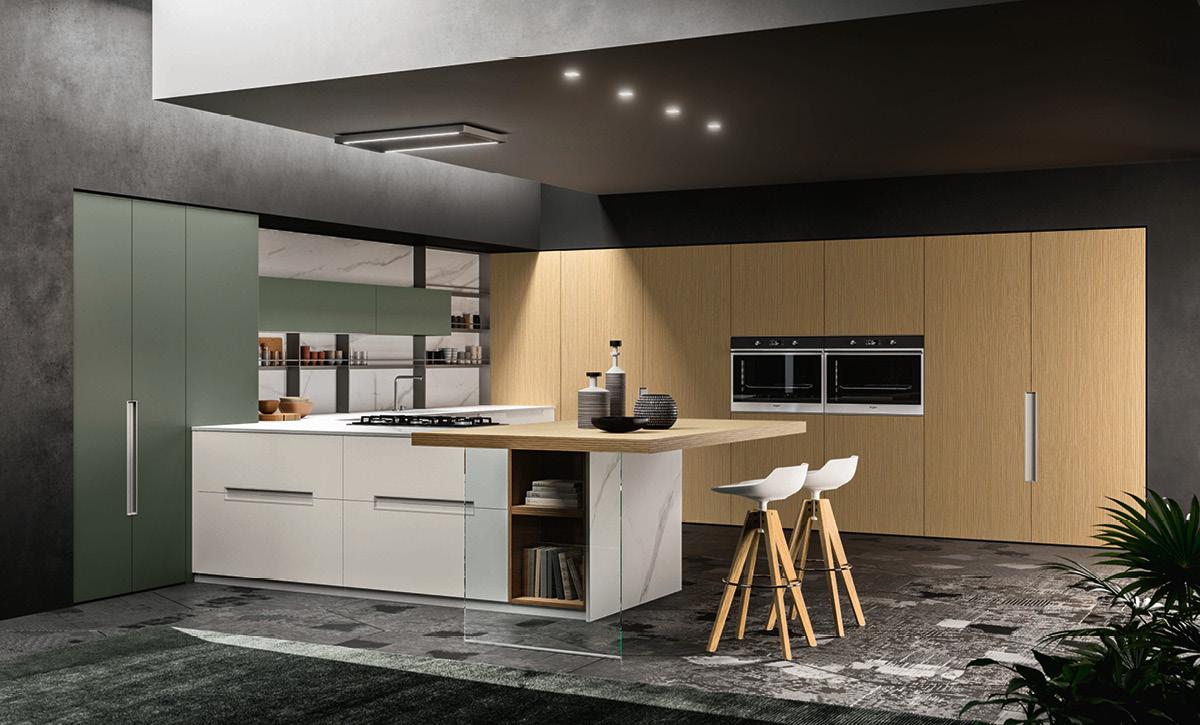
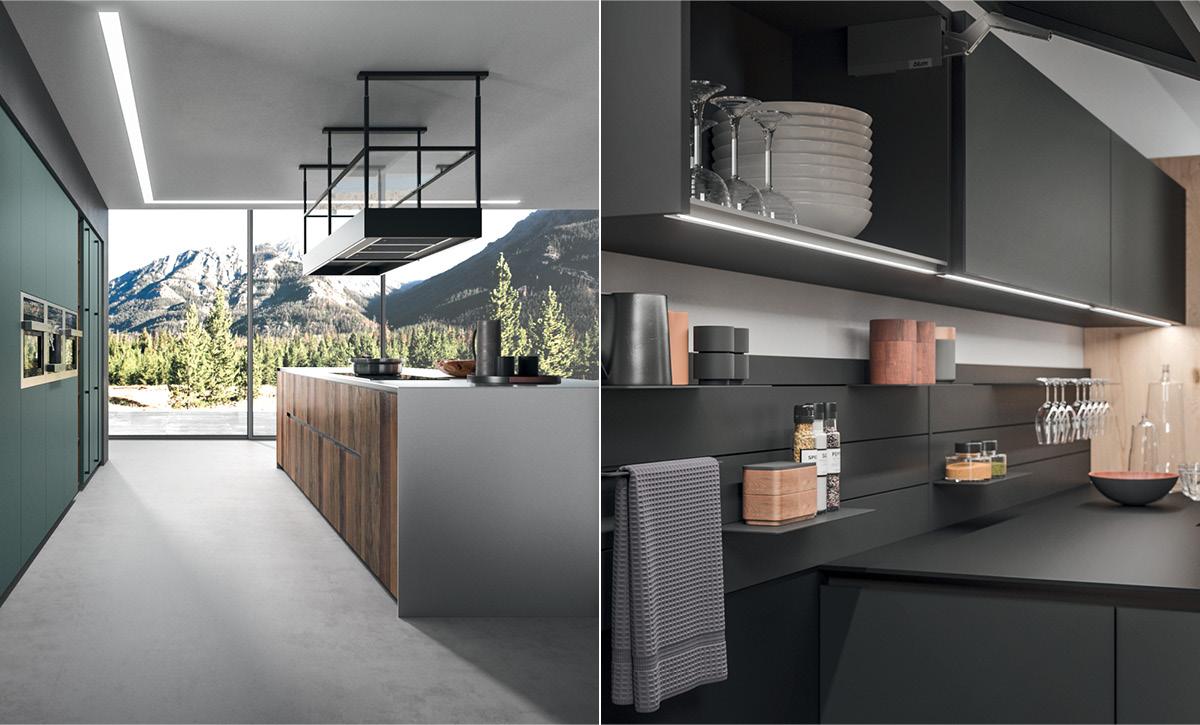
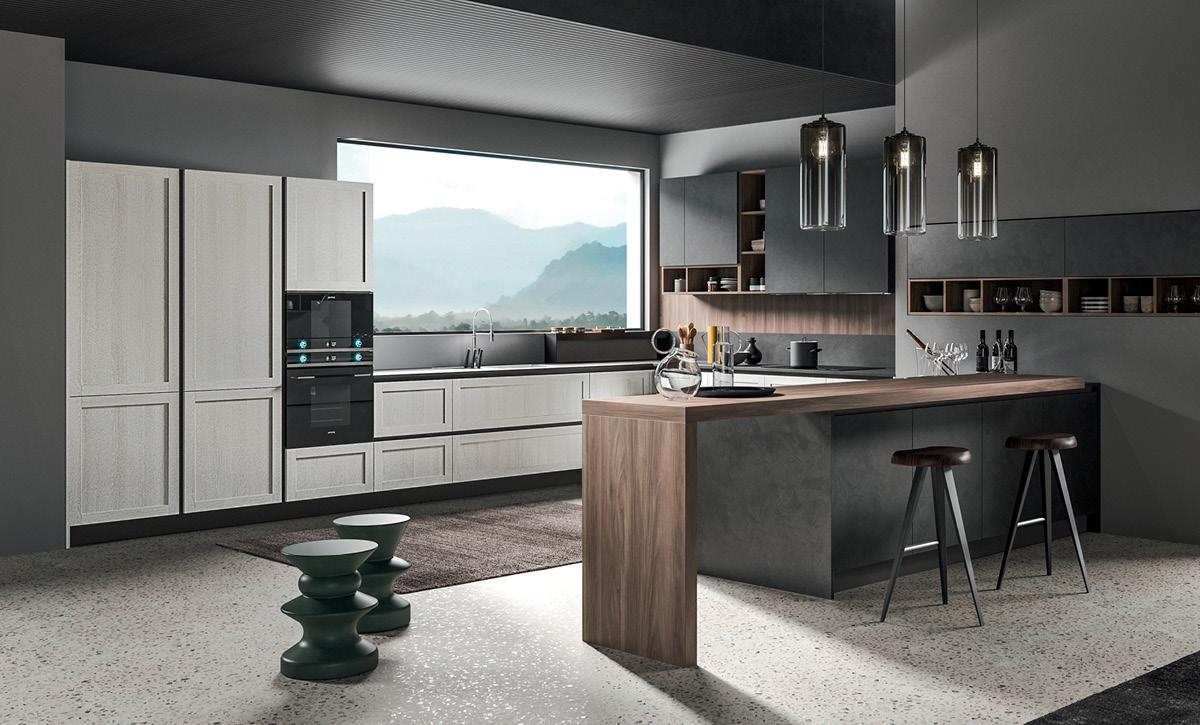
HOW TO LIGHT A KITCHEN WITHOUT USING CEILING LAMPS
Pendant lamps can be ideal for kitchens with an island, in which the work area is separate and can be easily lit from above. However, in most cases, when the operational part of the kitchen is along one or more walls, and especially in the presence of wall units, ceiling lamps are inadequate. To here are some alternative options:
- Lights built into the underside of wall units: this is the most commonly used solution for lighting kitchen worktops and hobs. Built into the underside of wall units or extractor hoods, they ensure targeted lighting where it is needed.
- Adjustable spotlights: make it possible to direct a beam of light at a specific point, and can therefore provide further support in lighting the food preparation area, but also create atmospheric situations, for example by lighting the middle of a table or specific details of the décor.
- LED strips: versatile and easy to position, LED strips can also be applied to shelves and shelving units, on the back of shelves, under wall units or on the edges of worktops and counters. They create additional areas of light, ideal for providing indirect light in specific areas of the kitchen.
- Suspended systems: mounted on cables or tracks, they can be used to connect several spotlights that can be switched on separately to change the lighting of the entire space.
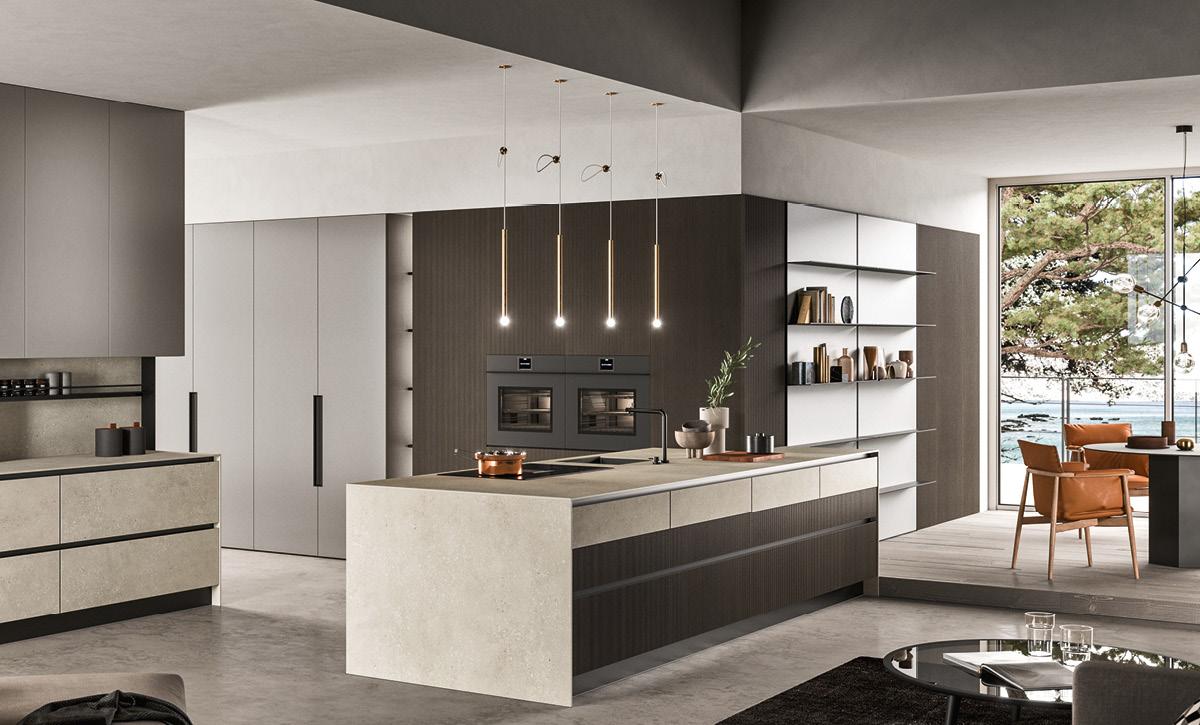
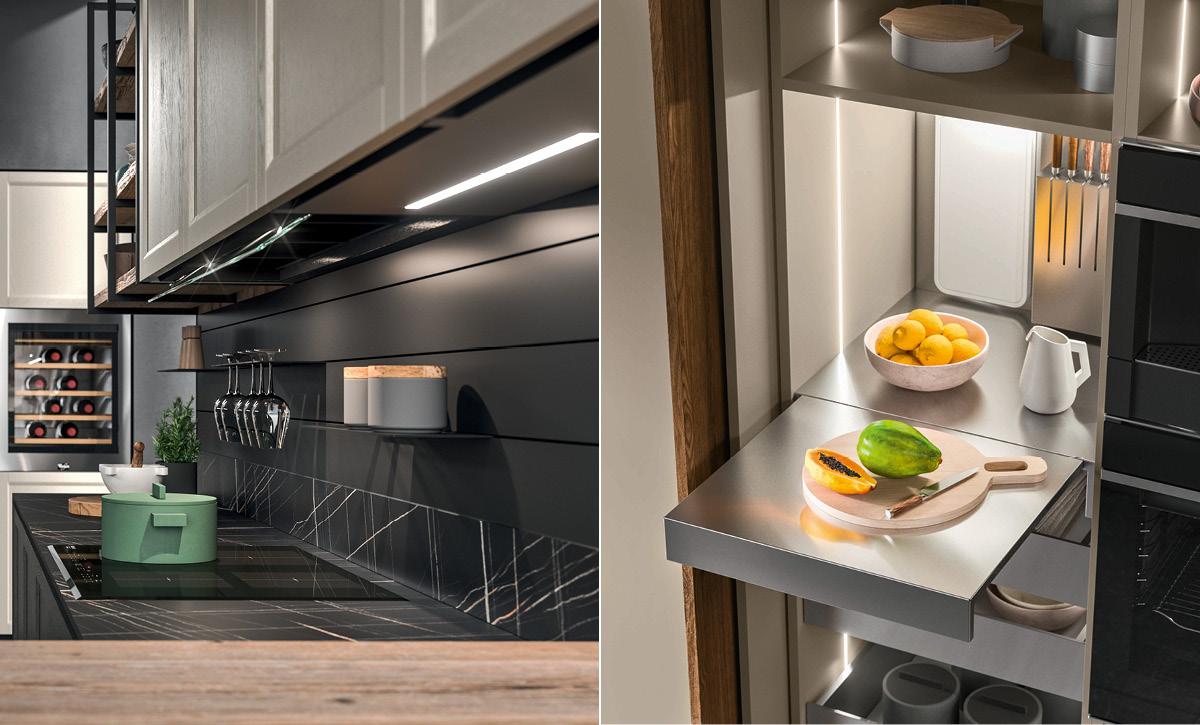
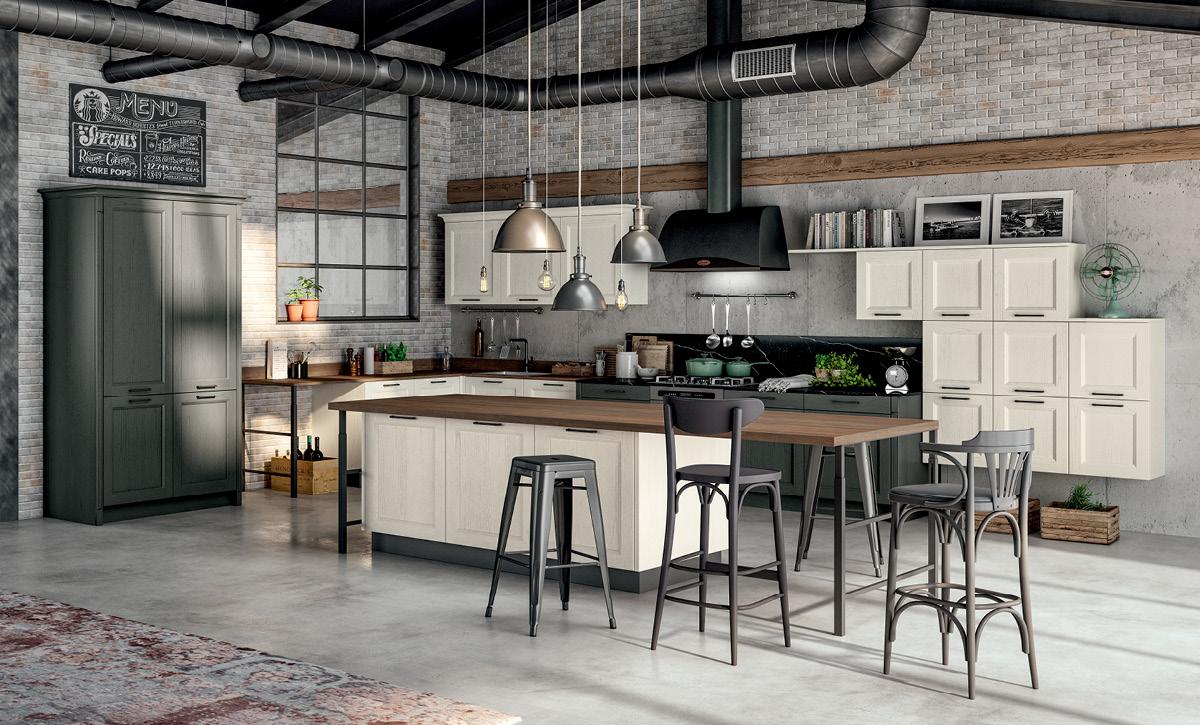
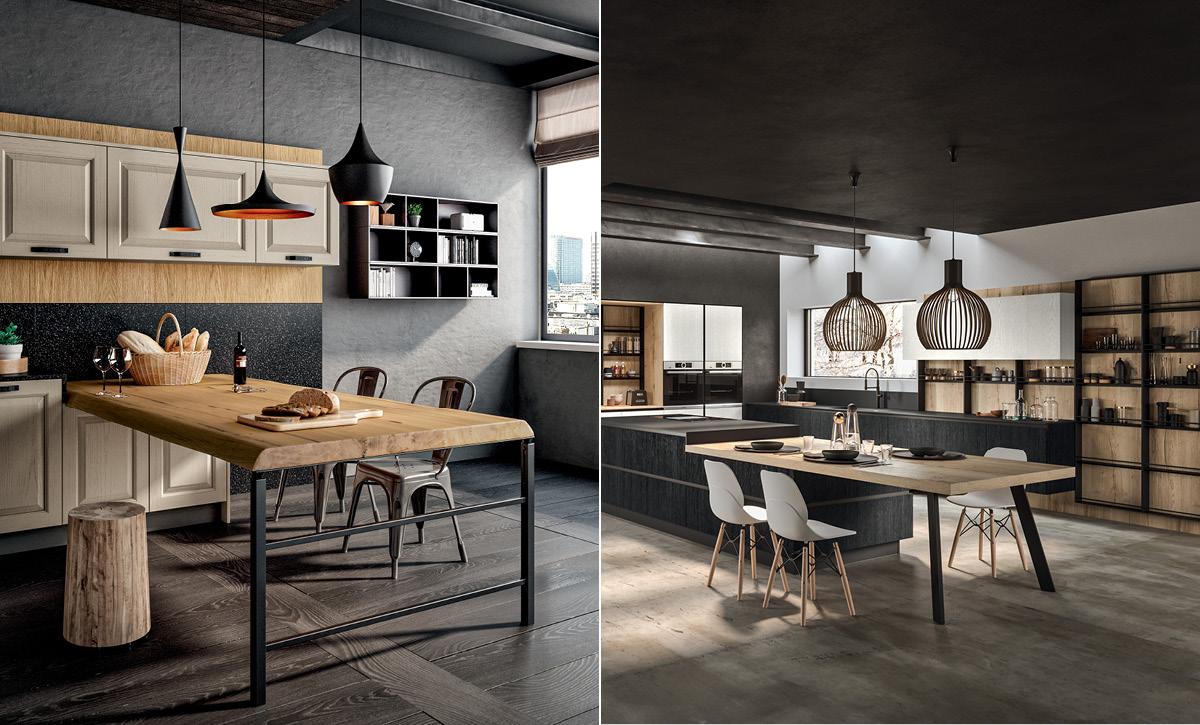
WHERE TO POSITION KITCHEN LIGHTS TO ACHIEVE THE BEST EFFICIENCY AND AESTHETIC RESULTS
Kitchen lighting must satisfy both efficiency and aesthetic requirements by creating an environment that is functional and at the same time pleasant and welcoming. Here are some tips for lighting the main areas of the kitchen.
- The worktop: in a kitchen with wall units, the best situation is to use built-in under-wall unit lights. They can be fitted with motion sensors, so they can be switched on and off even with full hands.
If the worktop is on an island or peninsula, or in any case when there are no wall units, ceiling lighting can be used. The important thing is that the lights always comes from above and from the front, in order to prevent awkward shadows on the work area. - The dining table: a table can be lit by one or more ceiling lamps, better still if a design solution is chosen. As an alternative to classic ceiling lamps, spotlights or track-mounted lights can be used, to focus multiple lights in specific points, such as the middle of the table and the individual place settings.
THE IMPORTANCE OF THE COLOUR AND INTENSITY OF LIGHTING
Kitchen lighting must not alter the colour of fresh ingredients or food being cooked. When natural light cannot be used it is therefore essential for artificial lighting to provide the best possible substitute.
This can be achieved thanks to lamps with a high CRI (Colour Rendering Index), a parameter that indicates a light source’s ability to faithfully reproduce colours as they appear in natural light.
Two parameters must be considered for optimum lighting: The brightness and the warmth (or colour) of the light, expressed in lumens and Kelvins, respectively.
The lumen is a unit of measurement for the amount of light issued by a light source in all directions. For kitchens, the ideal value is about 160 lumen per square metre, so a 20 m2 kitchen will require about 3200 lumens.
The Kelvin value, on the other hand, indicates the warmth and colour of the light. In a kitchen, a medium colour temperature (2700K-4000K) should be used to obtain an optimum effect.
ENERGY SAVING TIPS
For some years now, the old incandescent or halogen lightbulbs have been replaced by integrated LED lighting fixtures, which are able to produce the same light intensity as the old generation lights while significantly reducing energy consumption. Available in different formats and models, they can be used in any type of lamp or spotlight. Less versatile, but nevertheless very widely used, are fluorescent lightbulbs, commonly known as “energy-saving” bulbs.
Considering that energy consumption is expressed in Watts (W), here is how it can vary, for the same lumens, depending on the type of lightbulb used:
- old-generation incandescent bulb: 1521 lumen/100 W
- eco-halogen bulb: 1521 lumen/80 W
- energy-saving fluorescent bulb: 1521/50 W
- LED: 1521 lumen/12 W
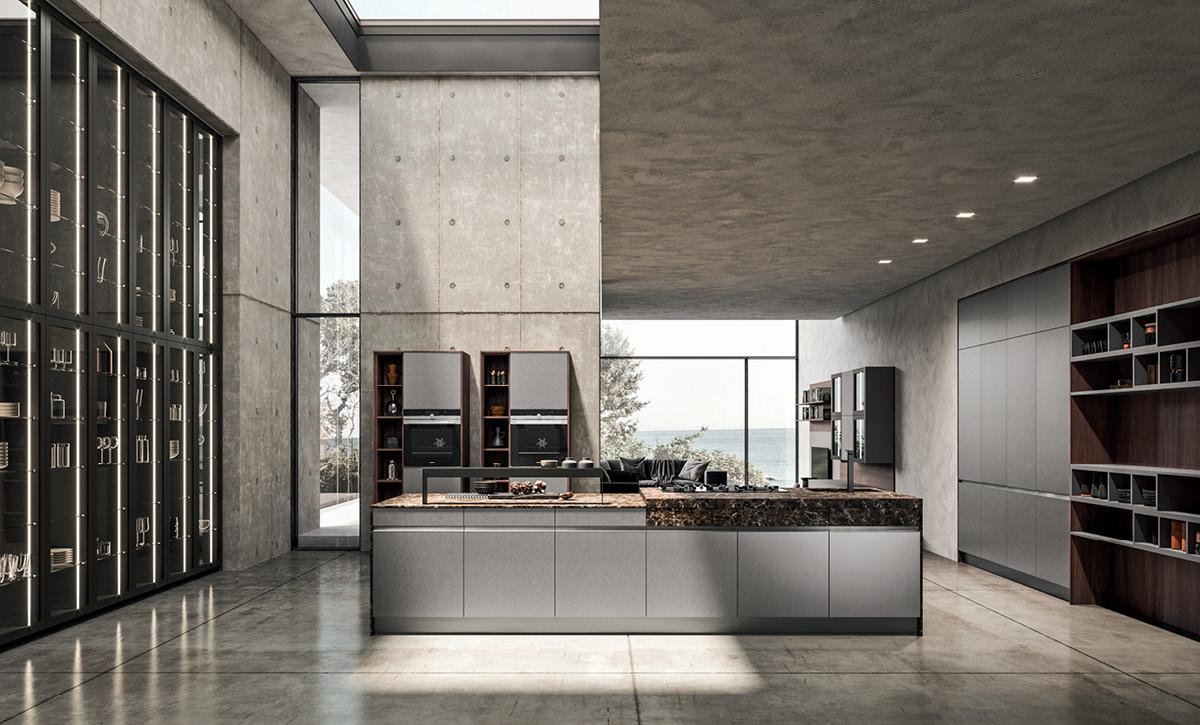
CONCLUSION
Understanding how to light a kitchen is therefore an essential part of the design process.
Lighting must reconcile functionality with aesthetics, while also making provision for energy saving. The right mix of direct and indirect lights and a combination of different types of light sources will make the kitchen a pleasant place to be at any time of the day.
Gentili cucine offers a number of LED lighting solutions, from built-in products to the most innovative designs, such as the Oslo LED light integrated into handles, in a range of variants for creating linear or spot lighting, with the possibility of a dimmer mechanism for adjusting the light intensity.
